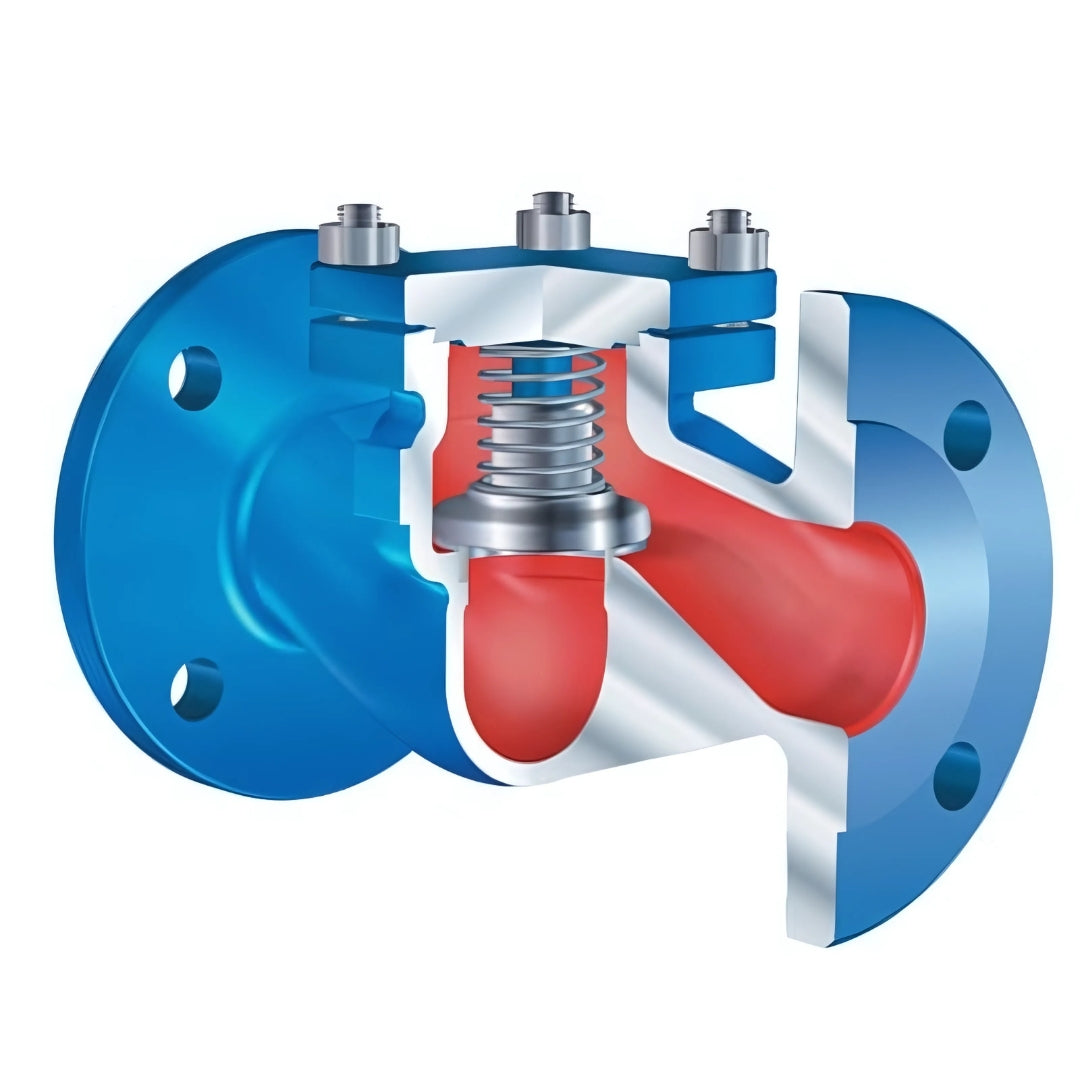Steam Valves
ARI CHECKO-V Lift Check Valve (Flanged PN16, Nodular Iron Body)
ARI CHECKO-V Lift Check Valve (Flanged PN16, Nodular Iron Body)
Couldn't load pickup availability
The ARI CHECKO-V Lift Check Valve with PN16 flanged connections and a nodular cast iron body is a cost-effective, reliable solution for preventing reverse flow in low-to-medium pressure systems. Its vertical lift disc design ensures automatic closure when backflow occurs, protecting essential components like pumps and regulators while maintaining system efficiency.
Constructed from nodular (ductile) iron, this valve body delivers a strong combination of mechanical strength, thermal resistance, and shock absorption. The PN16 pressure rating is ideal for general service applications such as water systems, heating networks, and low-pressure steam lines. The flanged ends allow for quick, secure installation and easy access for internal inspection or maintenance. Trusted by engineers across the industry, this ARI Armaturen valve provides durable non-return protection in compact, user-friendly form.
Key Features
Nodular Cast Iron Body
Tough, resilient material offering strength and flexibility for everyday industrial use.
PN16 Flanged Connections
Perfect for general-purpose systems operating up to 16 bar pressure.
Lift-Type Non-Return Design
Disc lifts with forward flow and closes automatically under reverse pressure.
Compact Installation
Suitable for both vertical and horizontal pipelines with limited space requirements.
Low Maintenance Operation
Simple, robust design ensures reliability with minimal servicing.
Ideal for Utility Systems
Widely used in water supply, HVAC, and low-pressure steam or condensate lines.
Share

FAQ's
What is the difference between a valve and an actuator?
What types of actuators are available?
The main types of actuators are:
Pneumatic actuators – use compressed air for fast, reliable operation.
Electric actuators – use electrical power for precise control.
Hydraulic actuators – use fluid pressure for high-torque applications.
Each type offers unique advantages depending on the environment, media, and system control needs.
How do I choose the right actuator for my valve?
To select the correct actuator, consider:
Valve type and torque requirement
Power source available (air, electric, or hydraulic)
Operating environment (temperature, humidity, hazardous area)
Control signal type (on/off or modulating)
Matching actuator torque and compatibility with the valve’s ISO mounting ensures reliable performance.
What are the main types of valves used in automation?
The most common valves in automated systems include:
Ball valves – for tight shutoff and quick operation.
Butterfly valves – for larger flow control with compact design.
Globe valves – for precise throttling and flow regulation.
Check valves – to prevent backflow.
Gate valves – for full bore flow isolation.
What’s the difference between a double-acting and spring-return actuator?
Double-acting actuators use air (or power) to both open and close the valve.
Spring-return actuators use air to open (or close) the valve, and a built-in spring to automatically return it to a safe position when power or air is lost — ideal for fail-safe operation.
How often should valves and actuators be serviced?
Regular maintenance intervals depend on operating conditions, but a good rule of thumb is to inspect every 6–12 months.
This includes checking for leaks, lubrication, seal wear, and actuator responsiveness to prevent unexpected downtime.

